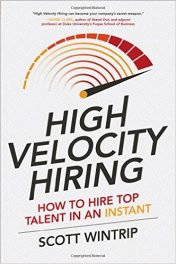Editor: Fabrice Papy
Publisher: Wiley-ISTE – 303 pages
Book Review by: Paiso Jamakar
This book is a collection of articles written by people working in and familiar with the development of public and academic libraries, both in physical and digital form. The article writers are mainly librarians, information officers, researchers and editors.
Fabrice Papy, a professor at the University of Paris, compiled contributions from 22 people who wrote their insights on various aspects and issues relating to this subject, edited them and put them together in this unique book on the brave new world of digital libraries and other virtual (non-printed) sources of information.
The range of topics in this book is extensive, from the growth of physical libraries and their evolution into digital forms, to the changing roles of librarians and information officers (e.g., can there be libraries without librarians?) to real-life experiences of users of a digital library at the Pasteur Institute, to a French university students’ unique information-access strategies, to the “digital spirit” of democratizing physical and digital libraries and making a whole lot of other storehouses of information available to the masses though the Internet. .
Other questions covered in this unique book are: how to access physical library catalogs in this new age of digital libraries and how to use search engines more effectively to locate the information you and I are looking for; three-dimensional interaction for digital libraries; and using new methods being currently developed to find information in less time than it takes now, for most people.
Chapters in the book include one entitled “Digital Libraries: the Publication of Legal Documents Online Within the Info-Mediation Service,” which discusses the issue of free versus paid legal information.
For example, supporting oral arguments in a court involves citing past cases, their outcome and disposition. Such information is available in two forms: in CD ROMs and online. The first one is a single compact source of information that provides themed indices of stored legal information such as laws in force, judgments, articles in publications with comments and interpretations of laws and rules, all of which makes researching and preparing a for a case a whole lot easier than searching all over the place on the Internet.
The other source is typically a paid service which may be a combination of stored knowledge and research plus access to the latest cases that gives lawyers an advantage.
Another interesting chapter is “What Scholarly and Pedagogic Material is Available Online for the Virtual User Within French Universities?” This chapter mentions and discusses three types information based on economic models.
The first type of information is published material financed mainly by the government of France and available free of charge to all because of the public character of such content. The second type of published material is private or in the realm of a “market economy” to which universities have acquired rights of access. The third type of published material is given away free by authors of the material and available on the Internet or other mass media of communication.
Digitization of newspapers, magazines, newsletters, professional and trade journals, and any material that has text and images has exploded in recent years and enabled its publishers to do away with the costly exercise of printing, mailing and trucking the printed material to where it is distributed or consumed. Many publications these days are available in both printed and digitized form. Some are online only.
Digital publications look just like printed ones but have more capabilities and uses than the printed periodicals. You can flip through the pages or go to a particular page of the publication on your computer, zoom in on a section of text or an image, save a page or the entire publication as a file within a folder (with multiple monthly issues such as January, February, etc.), email the publication to anyone, and do a whole lot of other neat things with a digital publication.
Many printing companies have gone out of business and the US Postal Service has lost billions of dollars of revenue due to digitization. But progress cannot be stopped. The fax machine may one day become obsolete just the way the telex machine has disappeared. Will physical brick-and-mortar libraries be replaced by virtual libraries? It seems likely.
This is a book that poses more intriguing questions than it answers, and that is one of the chief values of this book. This goes to show us that the editor Fabrice Papy and the contributors were thinking of and presenting issues and unanswered questions, rather than simply passing on to readers information already known to them
While small digital forms of information in compact disks (mini digital libraries, we could call them) are as old as the invention of the computer, the development of larger digital versions of the printed word and images is relatively newer, that came about with the advent of the Internet.
It would be interesting to watch what happens as digital libraries develop and the means of accessing the information they contain is made easier, not just for the computer savvy but also for technologically-challenged people. The faster spread of information and education, made possible through easier and faster access to digital information will have tremendous impact on economic development, especially in developing countries.






